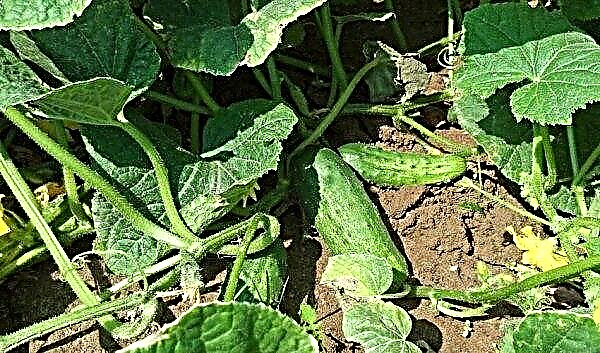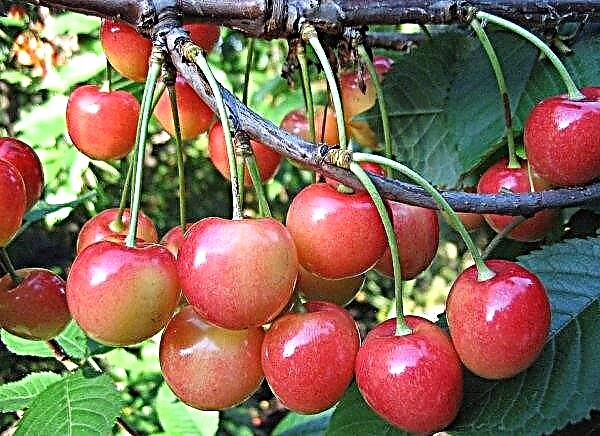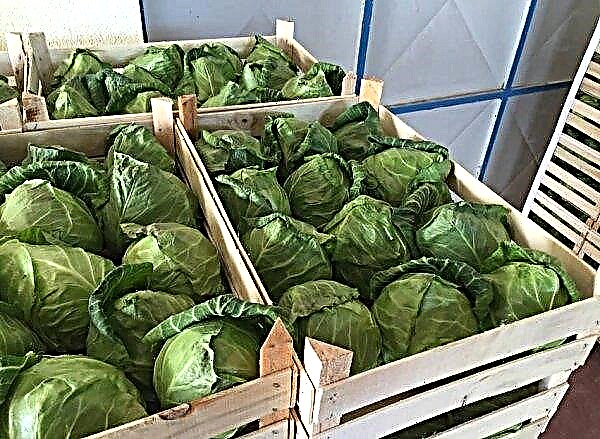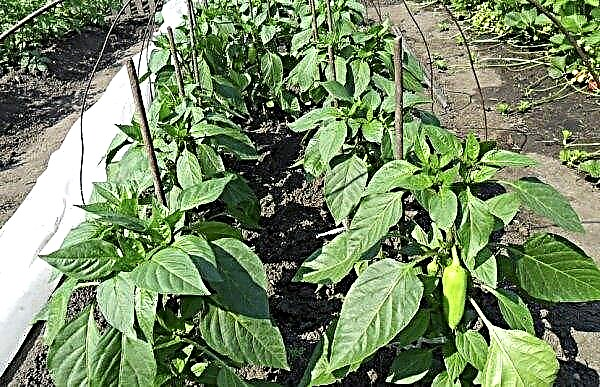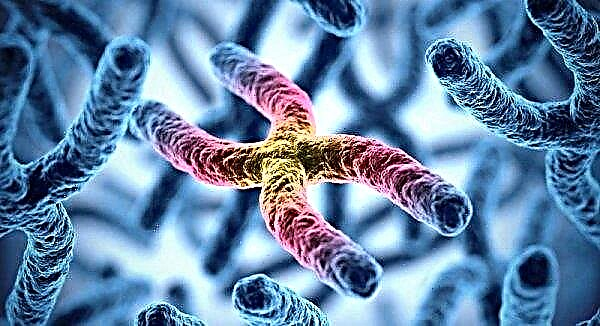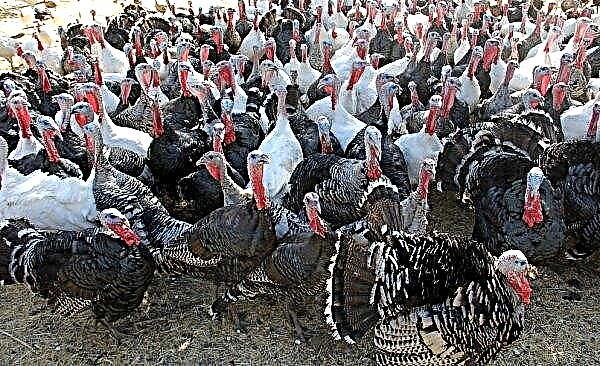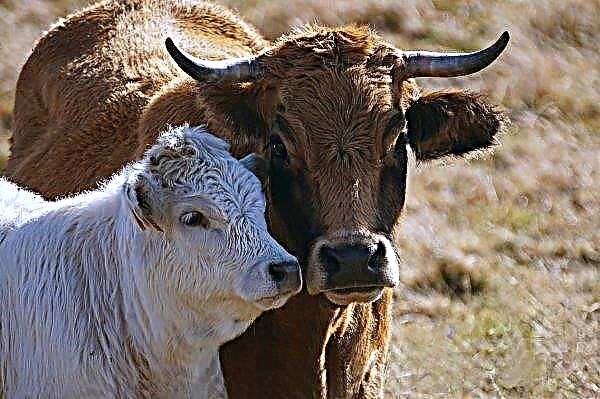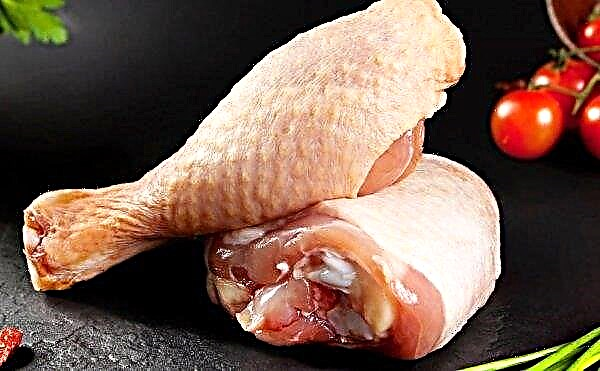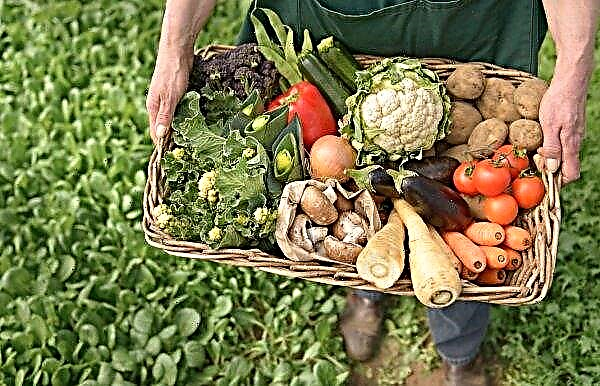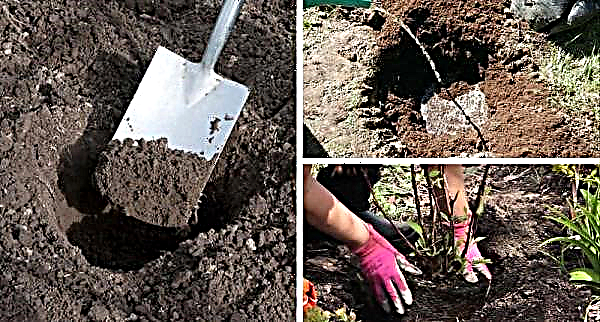The famous Yalta bow is one of the visiting cards of the Southern coast of Crimea. Excellent taste and the inability to grow this onion anywhere else except Yalta make it extremely popular among tourists. Read about the variety, where it grows and how it differs from ordinary onions, in the review.
Description of Yalta Onion
In the 19th century, the first bulbs of this variety came from Portugal. These were specimens with purplish-red peel and white flesh. Their size ranged from medium to large, and the taste was significantly different from local varieties: it was soft, without bitterness, slightly sweet. His breeding took up in the Nikitsky Botanical Garden, so the variety is sometimes called Nikitsky. Yalta onion refers to salad. There are more flavonoids and fiber in its bulbs than in traditional light varieties.
Did you know? Bow — one of the oldest vegetable crops that were used by early civilizations. It was grown in ancient Egypt, where the spherical internal structure of the vegetable was considered a symbol of eternal life.
It is believed that a combination of unique factors - mountain air, microclimate, lighting, soil composition, affects onions, making it more juicy and tasty than the same, but grown in the steppe zone. The described vegetable is often used raw, it is cooked on the grill or combined in dishes with other products, added as a decoration for salads. Its peel is a natural dye and can be used to dye fabrics.
- Onion has many useful properties:
- It has a lot of essential oils. Ethers easily penetrate into cells, including inside bacteria, causing their death - this provides the vegetable with antibacterial properties. Usually there is a lot of sulfur in the onion - it is it that causes tearing when you cut it, but in Yalta it is almost absent.
- Onions are used to treat respiratory infections thanks to allicin - a strong antimicrobial ingredient in its composition.
- The vegetable is especially rich in vitamin C, which is involved in the regulation of immunity, collagen production and tissue repair. Vitamin C also acts as a powerful antioxidant, protecting cells from damage caused by free radicals.
- Onions contain many antioxidants and compounds that relieve inflammation, lower cholesterol and, accordingly, reduce the risk of heart disease. Their anti-inflammatory properties can normalize high blood pressure and protect blood vessels from blood clots.

Differences from other varieties
Outwardly, the real Yalta onion is similar to other varieties of the same red onion. But there are differences, and there are quite a few of them. In order not to buy a fake, you need to be able to determine the authenticity of the appearance and organoleptic properties.
Difference of the mountain Yalta onion from others:
| Characteristic | Yalta | Other varieties of red onion |
| Bulb | flat, round, large | flat, round, medium or large |
| Inner layers | thick (6–7 mm) | thin (3-5 mm) |
| The number of layers in the cut | 7 | different amount |
| Layer color | pale pink with purple trim | more often white with or without edging |
| Peel | thick, dense | thinner |
| Taste | sweet, no bitterness | perhaps sweet, but bitterness will be present |
| Onion smell | missing | is present |
| Shelf life | about 2–4 months | different |
| For sale | only in july | Anytime |
It should be borne in mind that the variety in question ripens in July and can be sold no longer than it will be stored, therefore the onion that is sold in the spring is not Nikitinsky.
Did you know? Ancient texts from Egypt, Greece and India tell about the use of onions as an aphrodisiac. For example, in Egypt, priests were forbidden to eat it because of the influence exerted on their libido, and in medieval Europe it was served to the newlyweds in the morning after the wedding night.
How to choose and distinguish from a fake Yalta bow?
To make sure you have the right onion, just look carefully at the onion. Find the external differences, try the vegetable for taste and smell - this will help you correctly determine the type of purchase. Remember exactly the external differences of the variety, as some unscrupulous sellers can form onion braids from 2 varieties interspersed: the simpler steppe and mountain Yalta. The price of mountain onions is much more expensive, therefore, such a trick is beneficial for the seller, but the buyer should be careful.
Growing Features
It is as easy to grow the mountain Yalta onion as any other species - the difference exists only in the climate. Yalta onions are biennials, like any onions. In the first year, seeds are set from seeds (chernushka), and then in the second year, ordinary large onions are obtained. They are grown from sevka. The main requirement is the illumination of crops. The plot should receive the maximum amount of sun. Lack of sunlight will cause bitterness. Mountain soil is Tauride schists, Cretaceous sediments of the Mesozoic era. Consequently, soil layers are an alternation of clay rocks with layers of quartz. Interlayers of sandstone are also found: such a structure allows heat to accumulate from the heated soil in quartz and gradually give it to plants at night. This creates a special temperature regime for them, similar to a greenhouse for the roots: this factor is considered the main factor in obtaining a unique onion.
Mountain soil is Tauride schists, Cretaceous sediments of the Mesozoic era. Consequently, soil layers are an alternation of clay rocks with layers of quartz. Interlayers of sandstone are also found: such a structure allows heat to accumulate from the heated soil in quartz and gradually give it to plants at night. This creates a special temperature regime for them, similar to a greenhouse for the roots: this factor is considered the main factor in obtaining a unique onion.
Growing seedlings
Seeds for seedlings are planted 4 weeks before the last spring frost. The time for transplanting into the soil begins when the feather reaches a height of 6 cm. Sowing dates: end of February - March. Dates of planting in the ground: April - May.
Before planting, the seeds are disinfected in a slightly pink solution of potassium permanganate. Prepare the soil from a mixture of turf land and humus. Stack it in containers for seedlings.Important! Bulb formation occurs at a temperature of at least + 20 ° C, so it is not worth replanting seedlings too early.
Planting Seeds:
- make shallow grooves with a depth of 0.5 cm;
- sow seeds;
- sprayed with water;
- set the container with seeds in a place with good lighting;
- covered with plastic wrap.
 Seeds will germinate in 4–10 days. At the beginning of germination, the optimum temperature will be + 25 ° C, but after the appearance of sprouts it is reduced to +15 ... + 18 ° C. Within 4 weeks, while the seedlings will develop, it is regularly watered so that the soil is slightly moist. 2 weeks after the start of growth, fertilizing with ammonium nitrate and potash fertilizers is carried out.
Seeds will germinate in 4–10 days. At the beginning of germination, the optimum temperature will be + 25 ° C, but after the appearance of sprouts it is reduced to +15 ... + 18 ° C. Within 4 weeks, while the seedlings will develop, it is regularly watered so that the soil is slightly moist. 2 weeks after the start of growth, fertilizing with ammonium nitrate and potash fertilizers is carried out.Open transplant
After the last frost, seedlings are planted in the ground. Do not forget that the onion tolerates coolness, but does not form the onion.
Important! If during the ripening period of the crop the air temperature rises sharply, then the bulbs ripen quickly, but cannot reach large sizes.
Sowing scheme:
- Try to prepare a bed that would be similar to the Yalta. At the bottom of the trench you need to lay a thick layer of quartz (at least 15–20 cm thick).
- From above, lay a layer of clay soil mixed with humus.
- Make furrows. The distance between them should be 40 cm, and between the bulbs - 10 cm.
- Plant seedlings.
- Water the beds.
 Onion planting scheme.
Onion planting scheme.Crop care
The basis for further onion care is watering. If there are weeds on the site, then they must be periodically removed and the soil loosened to weaken it, giving the bulbs more room for growth. If there is no desire to weave often, then cover the aisles with mulch: it can be sawdust, straw, other materials.
Considering the peculiarities of the development of mountain onions, try to put quartz or pebbles in the aisles. Heated by day, they will give off heat to plants at night. It is important to feed crops with fertilizers, to add monthly ammonium nitrate and superphosphate.
Disease prevention
In mountainous areas, onions are almost not susceptible to attack by pests and diseases. However, in a normal climate, you will have to take action against ordinary summer insects.
The main pests of onions:
- Onion tick - a very small insect. The main symptoms of infection are plant growth retardation, the bulbs rot in the ground or during storage, become covered with gray coating, the roots die. Damage to plants by bulb mites leads to secondary invasion by other pathogens and also causes rotting of the crop. Treatment from ticks is carried out with Apollo or Vertimek acaricides.

- Leaf miners - these are larvae of flies or moths that leave white long stripes on the leaves, gnawing passages inside. This causes premature fall of green leaves and reduced yield. From means of spraying apply "Pyrethrum". But it’s better to buy rider beetles in the horticultural center - they will destroy these pests.
- Thrips - small black insects sucking juice. Symptoms of their appearance are discolored spots, scarring of leaves, a silver tint at the lesion sites. They are treated with Aktara.

- Onion fly - an insect similar to ordinary house flies. It is dangerous in that it lays larvae that damage the root neck and bulb. To combat it, watering the beds with vegetables with salt solution (200 g / 10 l of water) is used.

To control pests, sprinkling row-spacings with ash, ground pepper. Most pests do not tolerate pungent odors. This is considered a more environmentally friendly crop protection than insecticide spraying. Bulb diseases arise due to improper watering and rotting of the roots.
Did you know? Bow — strong antiseptic: during wars it was used in large quantities to disinfect soldier wounds. Also, the vegetable can be used to improve blood circulation by applying it to the skin.
The difficulty is that it is difficult to notice most of the diseases, because the bulbs are in the ground. To protect the vegetable, before planting, the seeds are treated with preparations of the Baikal-EM series or a slightly pink solution of potassium permanganate.
The main diseases:
- Powdery mildew - a disease affecting the stems. Symptoms - a silver or yellowish coating on the leaves. If you find a problem, temporarily stop watering. To control the fungus, spray crops with Fitosporin, Fitocid-M, Alirin B, etc.
- Gray rot - It affects the root neck and then spreads throughout the bulb. For the prevention of rot, spraying with triazole-based preparations in the second half of the growing season is used.
- Onion rust - differs in spots of characteristic color. Its symptoms are small discolored spots on leaves and stems that turn into round or elongated orange pustules. Severe infection can lead to wilting and death of plants. As for the fight against other fungal diseases, spraying with drugs based on copper is used - “HOM”, 1% Bordeaux liquid, etc.

- Fusarium wilt - manifested in the form of softening and decay of the bulb. To combat the fungus in the soil, it is treated with “Quadris”, and it is desirable to decontaminate the seed itself during planting.

Harvesting and storage
Plan for onion planning for July. The crop is ready for harvest if the bulbs are large enough and the green stems begin to fade. If 10% of the tips turn yellow, stop watering. Leave the onions in this condition for 2 weeks. It should be compacted, the peel will become more dense, which will increase the shelf life. Then dig out the bulbs and shake off loose soil.
If the weather was rainy or the ground is not dry enough, dry the bulbs by spreading them in one layer for 3-4 days, and then collect them in boxes. Store the crop in a dry place with good air circulation so that it does not rot. The air temperature during storage should be from +1 to + 10 ° C, and humidity should not exceed 60%. Getting a good onion crop is quite simple, but for this it is important to create suitable conditions for it, described above in the article.






